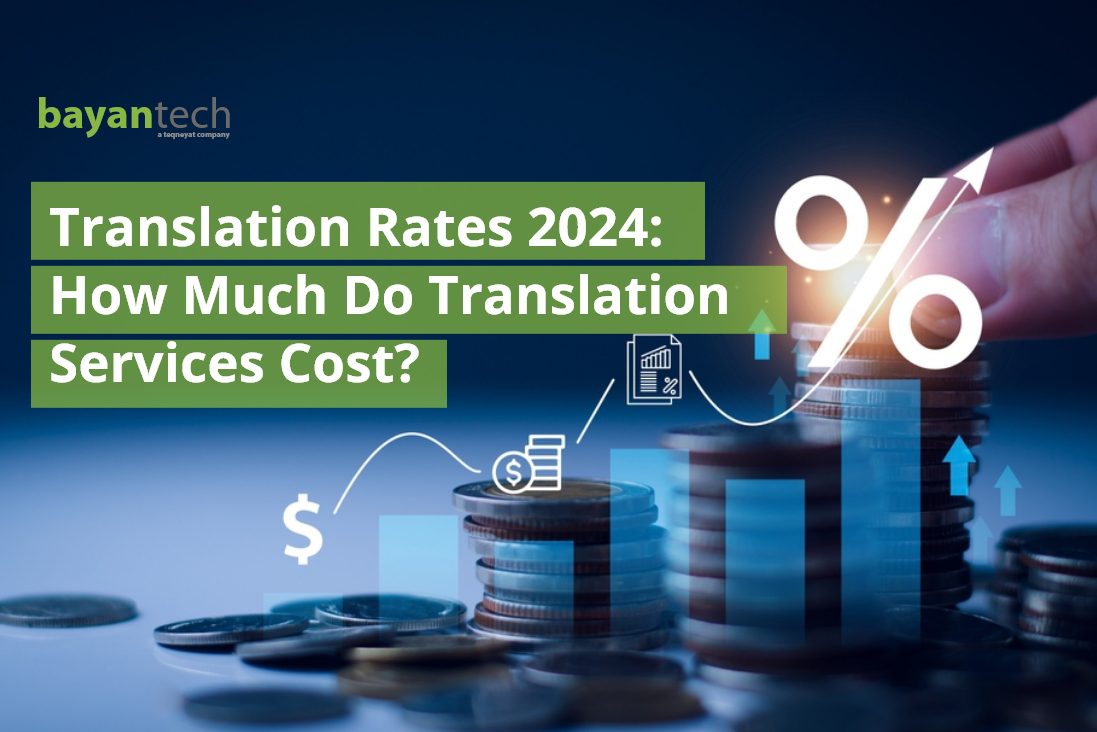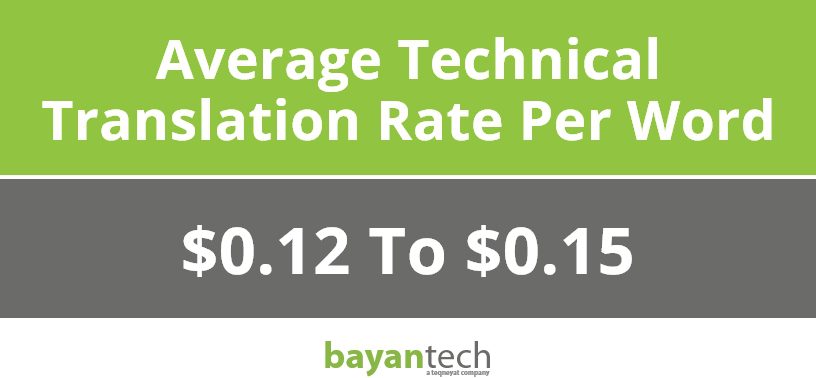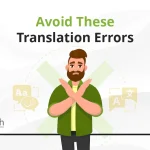8 Steps Every Medical Interpreter Takes
Looking for a medical interpreter? Discover the career path of medical interpreters and qualifications they need to acquire to take on interpreting jobs.
Have you decided to incorporate translation services as part of your global business expansion strategy but the cost of professional translation is holding you back?
Many businesses understand how important translation is in expanding their global presence but the misconception that translation comes with a price tag can put them off.
And for those confident enough to invest in translation, another challenge awaits – finding the right balance between quality and cost, especially since translation prices vary significantly.
If you’re contemplating translation services, you are probably seeking answers to some burning questions: how much do translations cost, how do translation rates vary greatly, and why?
This article will be your guide, giving you some clarity and helping you make an informed decision. Also, stick to the end to learn smart tactics to make translation cost-effective while maintaining quality.
3 Key Factors That Impact Professional Translation Fees
It makes total sense that any client like you would be curious to understand what exactly drives the cost of professional translation services. So, here’s a rundown of the key factors that determine the translation rates.
Your Language Pair
The source and target language of choice can make a big difference. Language pairs that are more widely used tend to be less expensive because they have more speakers and a greater supply of translators to meet demand.
Simply put, the more in-demand the language pair, the more cost-effective the translation service is.
For example, English and Spanish or English and Chinese are low-cost language pairs because they’re among the world’s most spoken languages.
Arabic and Japanese, while relatively less common, are still reasonably priced. Meanwhile, Nordic languages (such as Swedish and Danish) and Central and Eastern European (CEE) languages (such as Hungarian and Polish) are often considered more expensive due to the relatively poor availability of translators.
Subject Matter Complexity
The complexity of your content plays a role too. Highly technical subjects like medical or manufacturing industries require translators with specialized expertise. And that level of skill naturally drives translation prices up.
For instance, the legal translation cost can be higher than other nontechnical subjects, given the intricate nature of legal documents.
Check the section below for more about Technical Translation Rates!
Turnaround Times & Extra Services
The type of translation service you’re seeking is another important factor.
Do you only need translation only? Or do you also need desktop publishing to appropriately format your materials and adjust visuals? Of course, additional services impact translation rates.
Also, are you going for a full-human translation or opting for MTPE (machine translation post-editing)? For this too can affect the price as human translations generally cost more than post-editing machine translations.
What’s more, the expected turnaround time can affect translation fees. Of course, if you request a rush job, your translation partner will charge you more.
How Much Does Professional Translation Cost in 2024?
Translation rates are commonly priced on a per-word, per-page, or per-hour basis.
- Per word: You are charged based on the number of words in the source document that require translation.
- Per page: You are charged based on the number of pages in your document, regardless of how many words are on each page.
- Per hour: You are charged based on the hours the translator works on the document. (Note: this pricing module is more commonly used for editing and proofreading tasks.)
Average Translation Rate Per Word
In 2024, the average translation rate per word falls between a minimum of $0.09 to a maximum of $0.35. However, the price can still vary depending on the three factors we’ve discussed earlier.
Website Translation
When it comes to website translation costs, per-word rates are slightly higher, compared to document translation rates. The cost may increase if the website contains multimedia content and may require additional services such as subtitling, transcription, multilingual SEO, and UI/UX localization.
MTPE (Machine Translation Post-Editing)
Machine translation post editing rates range from $0.05 to $0.30 per word. However, the cost can change depending on the amount of work required, heavy or light editing.
Desktop Publishing (DTP)
Desktop publishing services are typically calculated hourly. DTP translation rates generally range from $30 to $70 per hour, determined by the complexity of the files and the tools required to complete the project.
Average Technical Translation Rate Per Word
Technical translation services focus on the translation of technical manuals and materials related to specialized scientific and technical domains. This type of translation spans various industries including:
- Life Sciences and Healthcare
- Medical and Pharmaceuticals
- Information Technology
- Engineering
- Manufacturing and Automotive
Unlike general texts, machine translation is often not suitable for technical content due to the precise terminology, specialized concepts, and safety-critical nature of the information.
And that’s why technical translation rates tend to be higher than general translation rates, ranging from $0.12 to $0.15 per word.
Here is a quick glimpse into some common examples of documents considered technical in nature:
- Technical reports
- Instructions for use
- User manuals
- Clinical trial documents
- Training materials
- Legal contracts
- Patent registrations
Price Your Project Easily With Our Translation Cost Calculator!
If you want the most accurate estimates for your upcoming translation project, we recommend you use bayantech’s free online calculator. It’s easy. All you need to do is fill out this form and you’ll get an estimate of how much the project is likely to cost, within a few minutes.
8 Steps Every Medical Interpreter Takes
Looking for a medical interpreter? Discover the career path of medical interpreters and qualifications they need to acquire to take on interpreting jobs.
5 Tips To Minimize Translation Costs And Maximize Quality
When seeking translation services, businesses want fast, cheap, and high quality translations. And the challenge of balancing quality and cost becomes a nagging concern. But the undeniable truth is: compromises must be made between these three elements.
You can never, for example, get cheap yet still high-quality translation. But you can find the most reasonably priced service with the level of quality you require – quality translations aren’t necessarily overpriced.
With a proper strategy, you can still achieve a good balance that meets your unique business needs. So, here are 5 tips to consider before rushing into that translation project.
1. Avoid Rush Work
If you are not really in need of urgent translations, avoid tight deadlines when requesting language services. Rush work often incurs additional costs. Allow your translation services provider sufficient time because this will work both ways, reducing expenses and enhancing translation quality.
2. Prepare Your Source Material
- Keep your source material in a translation-friendly format. When your content is available in an editable format, you can avoid extra charges for additional services like DTP.
- Leave enough space within graphical elements like tables and charts to avoid layout and design issues during the translation process.
- For software and website translation or localization, externalize translatable content to streamline the translation process and reduce the turnaround time and costs.
3. Define What You Want To Translate
You should always be very precise about what you want to translate. Prioritize key business content and make sure you are not translating duplicated files or repetitive content.
4. Leverage Existing Translation
- If you have previously translated content, you can provide it as a reference to your translators. This ensures consistency across all types of translation and makes it easier for translators to work with tools like translation memory.
- Provide the translation company with comprehensive and precise instructions.
- Communicate your expectations regarding tone, style, terminology, and target audience.
- Share reference materials, glossaries, and style guides.
This improves the quality of your translation early on while ensuring significant cost reduction.
5. Request A Quote or Sample Translations
When searching for translation companies and looking for the best value for your money, you can request a free quote from different translation agencies. This way, you can compare different offerings and make an informed decision that aligns with your quality standards and budget.
Make sure to provide detailed information about your project to receive an accurate and customized quote. Also, you can request sample translations or a small initial project to evaluate the quality of their work firsthand.
Strike The Right Balance Between Quality And Cost With bayantech
The article started with: how much do translations cost? But the real question is how to find the right balance between quality and cost. At bayantech, you get both.
As a leading ISO-certified translation company in MENA, bayantech provides full-service translation and localization tailored to your needs. We understand that while cost is a significant consideration, compromising on quality is not an option.
Our teams of expert native speakers and language professionals, robust quality assurance, and advanced translation technologies empower us to deliver the highest quality possible.
Ready to get started? Request an instant quote. Or contact us to talk to our experts and let us guide you through the process.












